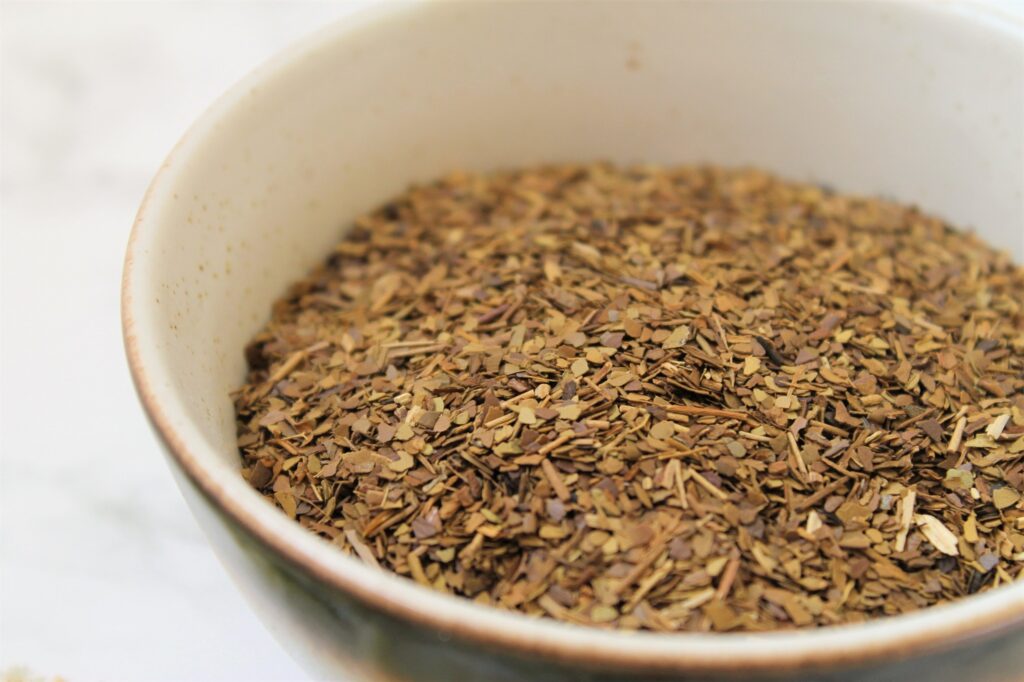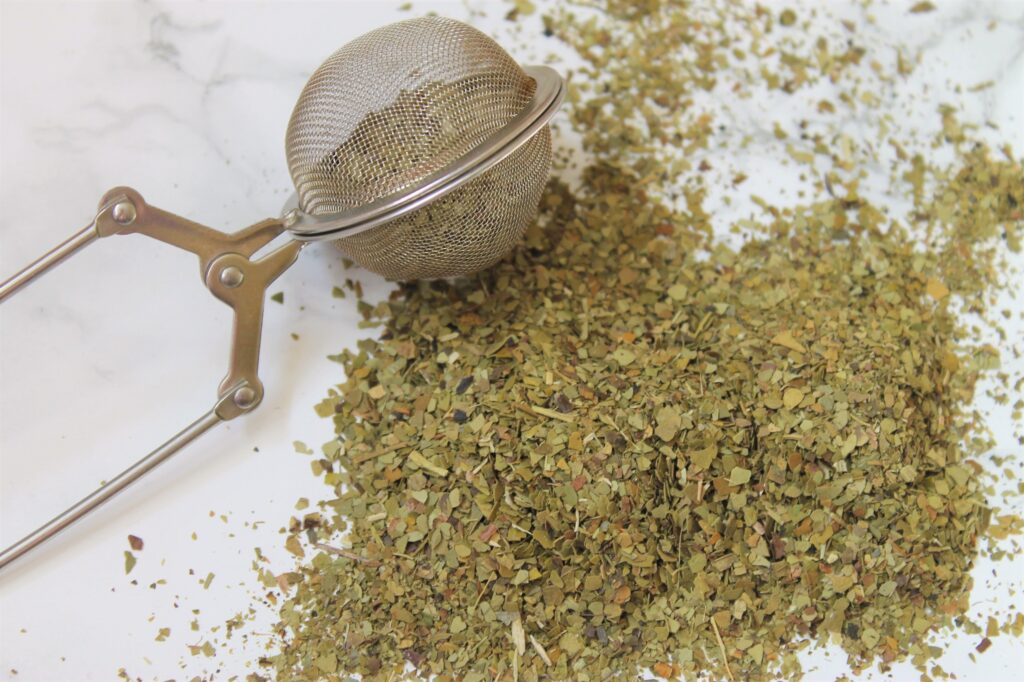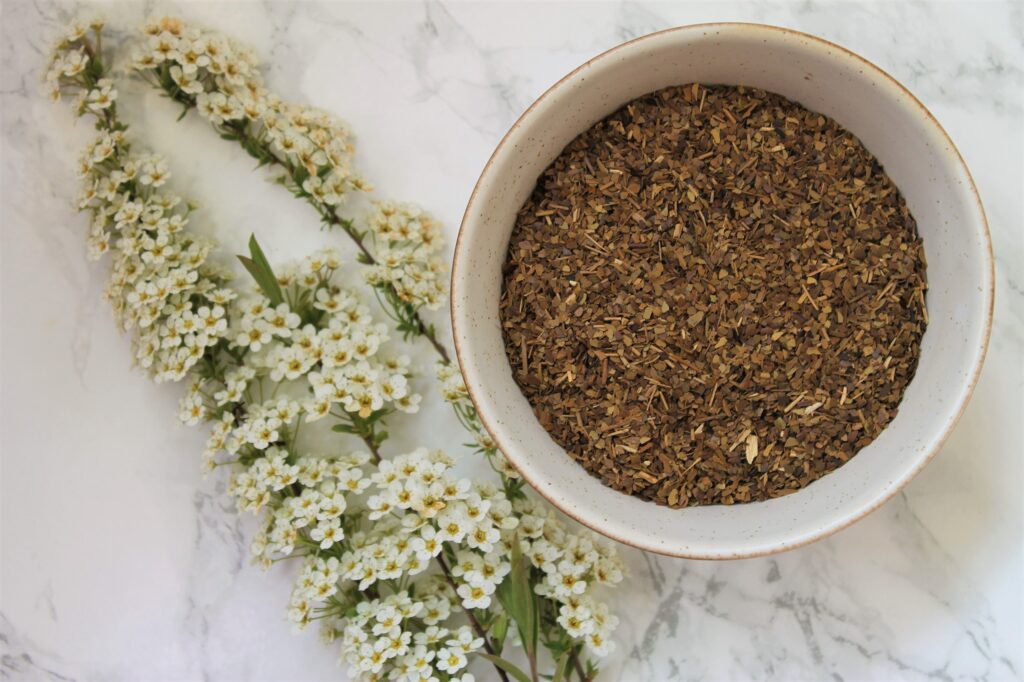Yerba mate is an interesting tea and one that’s worth learning about. Like matcha, pu-erh and other specialist types of tea, yerba mate can be a bit of an acquired taste. Even if you don’t like your first mouthful, I urge you to keep at it!
After a few cups of traditional mate (and a lot of experimentation with brewing method) I found a love for this Traditional South American tea.
In this guide, you’ll find out what yerba mate is, what it contains, how to brew it, and a few health benefits too. To find a tea to try, make sure you search the blog for my tea reviews!
What is Yerba Mate Tea?
There are two types of tea:
- Tea from the Camellia sinensis tea plant (black tea, white tea, green tea, etc.)
- Tea from other plants (technically called infusions).
It’s made from the leaves of the Ilex paraguariensis plant, which means it falls into the second category. Technically, it’s an infusion!
Yerba mate, or just mate, is from south America. It’s popular from Brazil to Argentina and is available to buy around the world (including in the UK).

What does it taste like?
I’ve tried quite a few yerba mate teas and I think it’s quite close to a grassy green tea, but with more depth. It can be quite musty and bitter, rather than green and refreshing.
One of the main draws is the caffeine content. According to Yerba Mate Amor, a single serving contains up to 80 milligrams of caffeine.
Of course, this really depends on how you brew it. From the most caffeine to the least:
- Prepared traditionally in a gourd,
- Loose leaf mate brewed normally,
- Tea bag.
Is it legal?
Yes, yerba mate is legal in the UK and across the world. It doesn’t contain any illegal substances.
It does contain a lot of caffeine, however, but still less than a cup of coffee. There’s only a risk if you drink a lot of it very quickly (and even then, you’ll just feel a bit unwell). It’s not dangerous at all.
The FDA recommends no more than 400mg of caffeine per day for a health adult. So don’t worry, mate is way below that limit.
Although it’s not a caffeine-free herbal tea, it still has some natural health benefits and antioxidants too.

Types of Mate Tea
Although all yerba mate is from the same plant, there are different varieties depending on where it is grown.
Brazilian mate and Argentinian mate are not the same. But this is kind of like different types of black tea. Most standard, supermarket blends will just label it black tea… and that’s fine.
But the specialised tea stores will differentiate between different black tea varieties. It’s the same with yerba mate. In general, any yerba mate is roughly the same. If you are serious about tea, you can find single-origin yerba mate teas. Then you’ll be able to pinpoint the subtle differences in flavour.
If you want to buy a taster set of different mate teas, check out my review of the Teapro Yerba Mate box. It’s part of a tea subscription but you can also buy it separately.
How to Brew Yerba Mate
The simplest way to brew this is the same way you brew any loose-leaf tea.
- Put 1 teaspoon of leaves in an infuser,
- Pour over hot water (roughly 80°C),
- Let it infuse for up to 2 minutes,
- Remove the leaves and enjoy.
You can also find tea bags filled with yerba mate, but I recommend you still stick to 80°C water when you brew it. This will prevent scalding the tea and making it too bitter.

The Traditional Way (Use a Gourd)
A gourd is a vegetable. It’s kind of like a small pumpkin or butternut squash, except it has a very tough outer skin. In South America, the inner part of the gourd is carved out and then the skin is dried.
The first thing you need to do is cure the gourd.
- Fill the gourd half-full with loose leaf,
- Pour in hot water (not boiling) to the brim,
- Let it sit for 24 hours,
- Remove the liquid and leaf, then scrape the inner sides gently,
- Let it dry completely in a sunny spot.
When you want to make yerba mate in your gourd, fill about 1/3 with mate leaf then make a well in the centre (just like baking recipes).
Then you will need a bombilla or metal straw. Unlike a normal straw, these have a built-in filter to stop you sucking up the mate leaf.
Place your straw in the well, then gently pour warm water in around it.

Yerba Mate Health Benefits
Personally, I try to drink tea just because it tastes good! However, if you’re interested in how healthy yerba mate could be for your body, then here’s the science.
Lose Weight
Yep, yerba mate can help you burn fat and lose weight. Sort of. Like always, there’s a catch.
A 2014 study found that you can burn up to 24% more fat if you consume it before a moderately intense round of exercise.
You still need to put the work in, but this tea is a good way to enhance your workout.
Protect Your Heart
Yerba mate contains antioxidants that may protect your heart against disease. More research is needed on the effect of it in humans, but animal studies have found some evidence that it has protective properties.
Keep in mind that caffeine isn’t as good for your heart (it increases your heart rate and blood pressure), so these effects may cancel each other out.
Treat Infections
One study found that yerba mate has antifungal properties and another discovered that it could deactivate E. coli (that’s what causes food poisoning).
The problem is, these studies applied a large quantity of concentrated or extracted leaf to infected cells. That doesn’t mean that yerba mate will treat or cure anything when you drink it normally, however!
As always, I advise that you take these health benefits with a pinch of salt. Enjoy this cool tea type for what it is and seek real medical advice if you have any concerns.
Now, any questions? Comment below!
